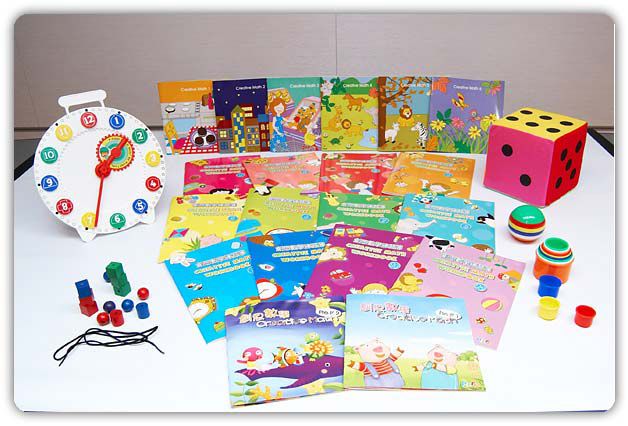

2 to 6
Toddler, Primary, Junior, Senior Class

Textbook – 8 levels
Workbook – 12 levels

Creative Math System is designed to stimulate children’s logical-mathematical intelligence. Children learn through doing reasoning and creative activities, such as songs and chants, games, storytelling, roleplaying, concrete materials, and pictorial displays, that turn abstraction into concretization to identify, describe, apply patterns, make comparisons, and recognize relationships. Thus, the course is to sharpen children’s logical thinking, develop understanding, competence and confidence in the application of mathematics, their creativity, enjoyment and their engagement in lifelong learning.

The curriculum is designed for the individual needs of children in different age groups. Children learn simple to complex mathematical concepts through manipulation and right-brain graphic thinking practices. The course contents include:
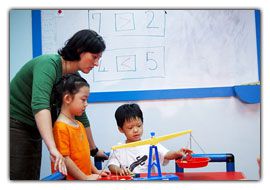
Toddler Class:
Young children learn best through activities that are relevant to their lives. Using stories, games, songs and chants as medium in math class will help children learn from their concrete experiences, grasp abstract concepts later on, and arouse their curiosity and interest at the beginning stage.
Primary Class:
Children are able to make real life connections, to make mathematics more interesting, engaging and applicable to real life, when they develop a natural interest and enjoyment of mathematics. In play and daily activities, children explore mathematics ideas and processes along the way.
Junior Class:
When children engage in play, a context in which they explore and manipulate mathematical ideas, they enhance their cognitive, linguistic, physical, and problem solving development at the same time. In the learning process, children learn to appreciate mathematics as an essential and relevant part of life.
Senior Class:
Children demonstrate confidence, curiosity and exploration in applying mathematical knowledge, skills and understanding to everyday situations and to solutions of everyday problems. Through discussions, manipulations, contexts, and various mathematics activities, children develop the abilities of discovery, understanding, and problem-solving skills.

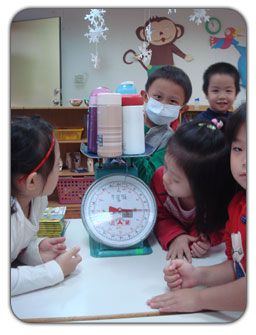 Building on reasoning and logical thinking is the core and basis of Creative Math Curriculum. To make mathematics learning relevant to children's lives and within their reach. Warm-Up, Group Discussion, Theme-based Activity, Evaluation and Review are four main procedures in Creative Math Teaching System.
Building on reasoning and logical thinking is the core and basis of Creative Math Curriculum. To make mathematics learning relevant to children's lives and within their reach. Warm-Up, Group Discussion, Theme-based Activity, Evaluation and Review are four main procedures in Creative Math Teaching System.
Warm Up:
Songs and chants, reading, games and activities are provided for inspiring children’s curiosity and developing their exploratory imagination to begin the lesson.
Group Discussion:
To build on children understands of theme concepts, the teachers have them to observe, to question, to discuss, and to research the relevant ideas by using various pictures and other teaching aids.
Theme-based Activity:
To strengthen children's logical thinking ability and establish their interests in learning mathematics, diversified activities are arranged to stimulate their desire to explore mathematical concepts as well as to have a positive attitude in the process of solving problems.
Evaluation and Review:
Through activities, body movement, role playing and workbook practices, children enhance their literacy skills and to think logically. The learning process encourages the development of their eye-hand coordination, use of the small muscles in the hands, and visual acuity.

1. Numeric, quantity, spatial, geometric and logical thinking teaching aids
Introduce the topic with related ready-made educational aids, and help children use these aids to proof related topic and enjoy learning.
2. Vivid cloth books, picture books and models
Through the use of puppets, cloth books and animal models, children combine their concrete experiences with manipulation and grasp abstract concepts later on. In a way, children enjoy learning mathematics more and their literacy skills are improving while listening to stories and role playing.
3. Flip charts, word cards, charts and graphs
Children learn to share their thoughts and to communicate with others by using charts, graphs and field books which provide a bridge between the concrete and abstract.
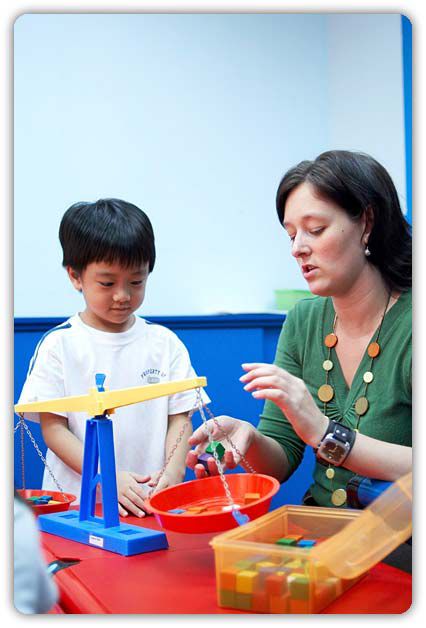

Children construct a number of mathematical concepts that will become the basis for more complex mathematics based on their general developmental patterns. These concepts include:
A. Basic Concept Course
1. Number and quantity cognition
a. Learn to say, count and write numbers
b. Recognize the relationships between number and
quantity
c. Apply number and quantity, such as length/width, big/small, capacity, time, on
concrete and abstract experiences
2. Spatial concept
a. Identify right/left, up/down, front/back, inside/outside
b. Identify two-dimensional and three-dimensional space by experiences or
appearances
3. Geometrical concept
a. Identify the shape according to its appearance
b. Name the shape words correctly
c. Comprehend and match attributes of different shapes through play or drawing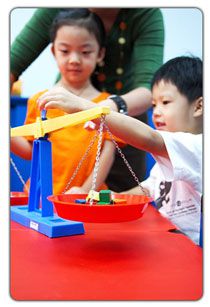
4. Logical thinking
a. Provide creative and fun activities related to the topic
b. Apply mathematics tasks to real life experiences
c. Learn through observation, assumption, verification,
inference and dialectic
d. Make logical connections between the names of
numerals and the quantities
5. Reasoning and critical thinking
a. Experience and appreciate the fun in mathematics
b. Hold information in minds and use it to make
comparisons
c. Understand the application of theory in relation to everyday experiences
B. Basic Skill Course
1. Physical development
a. Usual movement
Children enhance their body coordination and self-control ability through the use of sensory and physical movements as well as educational aids.
b. Special movement
Children increase their spatial cognition and self-exploratory interest through rolling, crawling and balancing practices
2. Expressive ability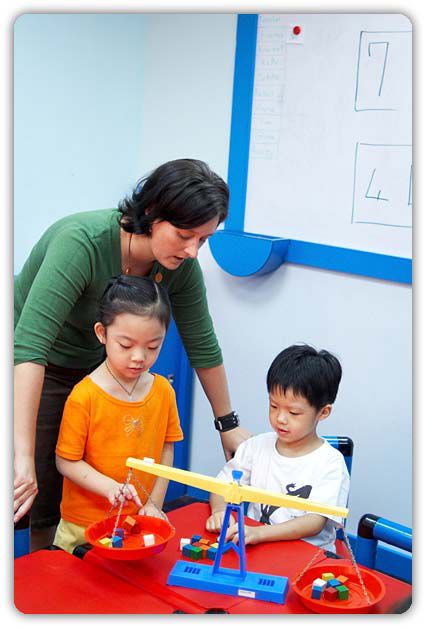
a. Build on communication skill through thinking and self-
expression process
b. Enhance the ability of solving problems and
observation skills
3. Sensory perception ability
a. Children develop their concentration from what they
hear when abstract concepts are expressed orally.
b. Children transform their abstract concept into actions
concrete while applying practices.
c. Children enhance their observation, memorization and
eye-hand coordination skills when their visual
identification skills are reinforced.

